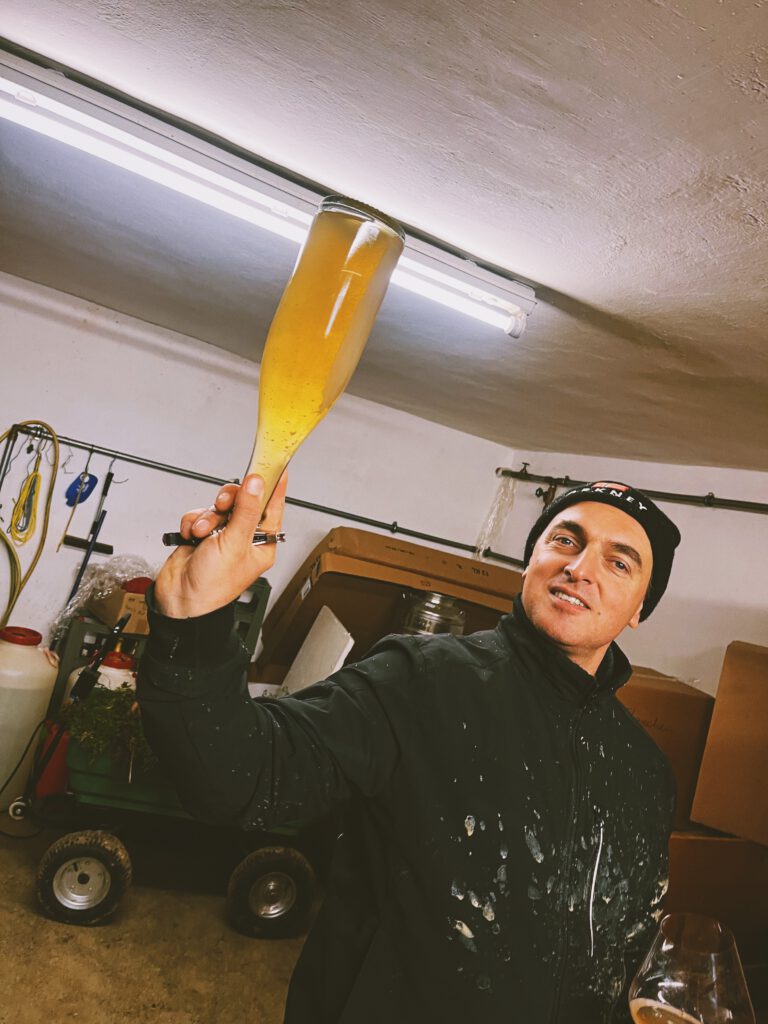
Name: Boris Kovacic
Winery: Projekt: Wildtyp
Region: Burgenland, Austria
Varieties: Grüner Veltliner, Müller-Thurgau, Neuburger, Blaufränkisch

Boris Kovacic, the geneticist, has hung up his pipette after 18 years of stem cell and cancer research to focus full-time on winemaking. Although Boris was already making wine as a hobby, he made the drastic turnaround in 2021. In St Margarethen in Burgenland, he grows Grüner Veltliner, Neuburger and Müller-Thurgau, among others. After years of careful preparation focused on flavour, all wines are made on the skins.
When we first visited his cellar in November 2023 to taste the wines, we were speechless. A special and fun experience in an old cellar he rents from a retired winemaker. His focus is striking and very controlled. Even the young tank samples already tasted very balanced, quiet and very rich in flavour. The wines offer great drinking pleasure, are playful but at the same time very gastronomical. For lovers of orange wine, this is definitely a must try!
What does Projekt: Wildtyp hold? – To bring back the bewildering diversity of flavours and sensory pleasure to the world of increasingly standardised wines from across our planet. The combination of micro-organisms, flora, fauna and vines is unique to each individual vineyard. So why make interchangeable wines? Besides the literal meaning of a ‘wild type’ as a wild person or thing, the term actually comes from genetics (my abandoned profession) where it stands for an unchanged, unaltered form of a living organism (bacteria, yeast, plant, animal) – as it would appear in wild nature.
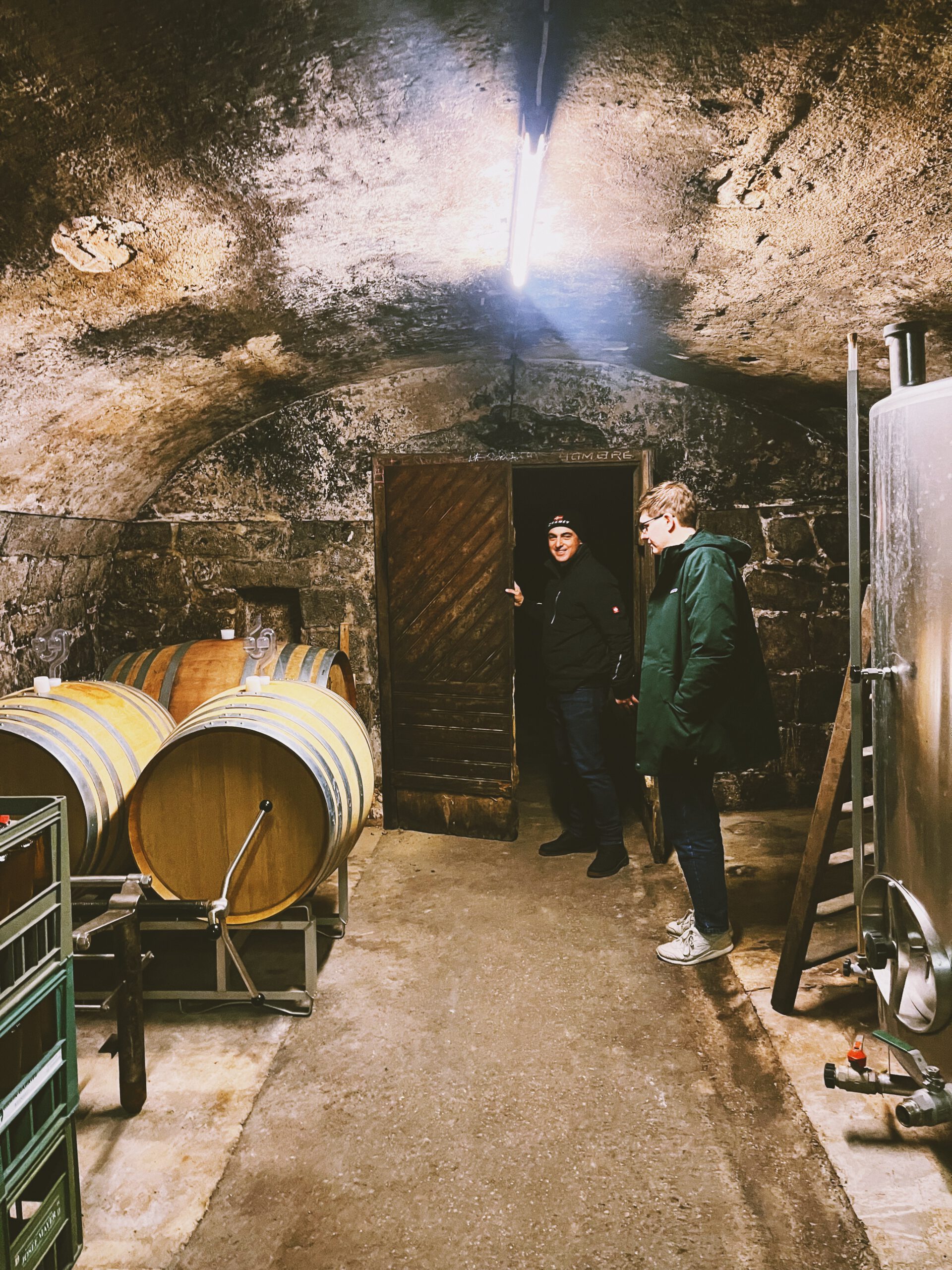
This is his ideal. So to achieve this ideal, he does not use any authorised additives (whether natural or artificial) such as yeasts, enzymes, chemicals or filtration techniques. Very low sulphur additions – well below the limit and only when necessary – are allowed. All work with the vines is done exclusively manually. The tractor is used only for tilling the soil (we sow organically grown wild plants between the rows) and for about 50% of crop protection management. The rest is done manually.
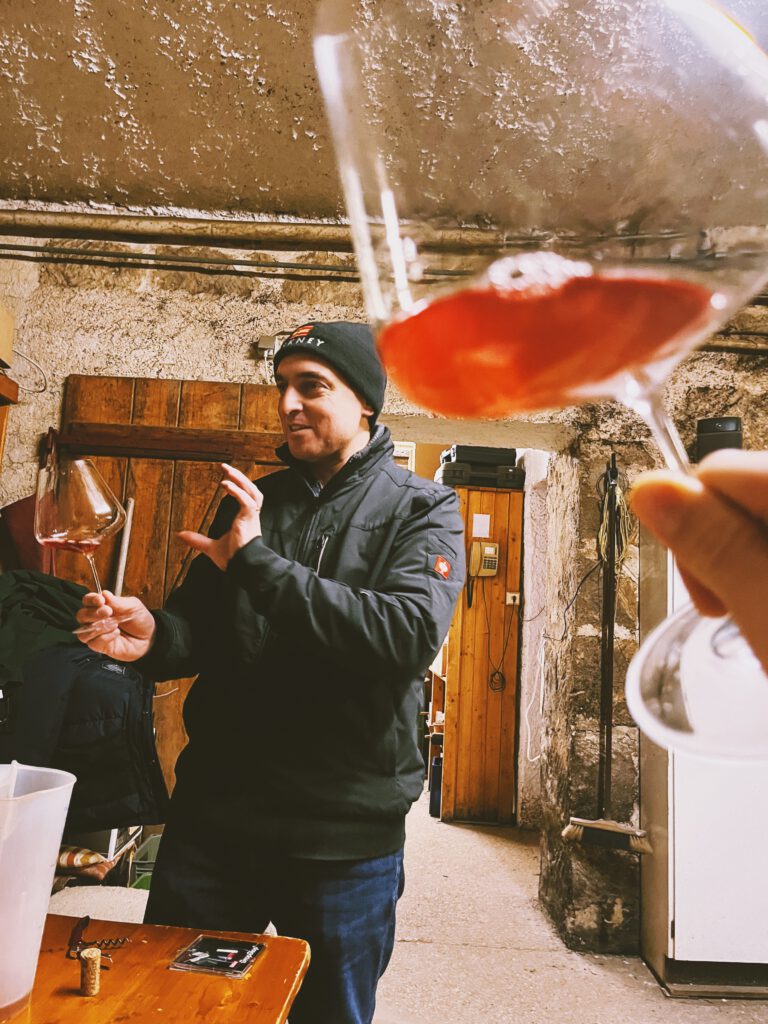
-
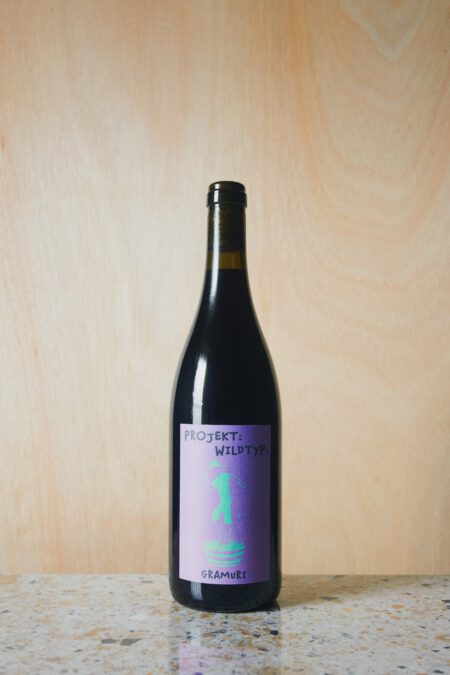 Projekt Wildtyp – Gramuri 2022€ 22,30
Projekt Wildtyp – Gramuri 2022€ 22,30 -
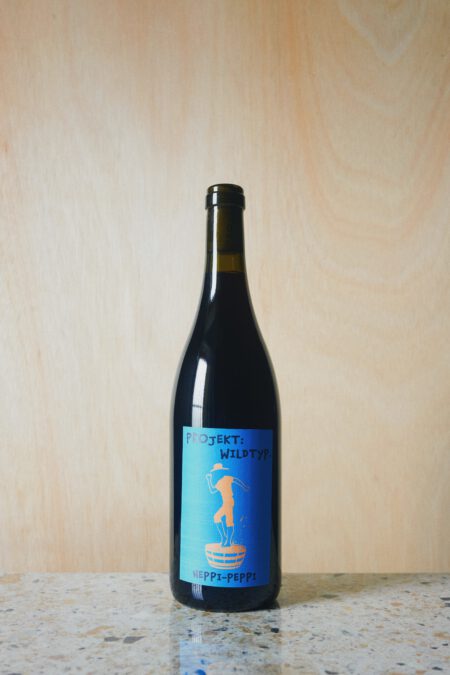 Projekt Wildtyp – Heppi-Peppi 2022€ 21,60
Projekt Wildtyp – Heppi-Peppi 2022€ 21,60 -
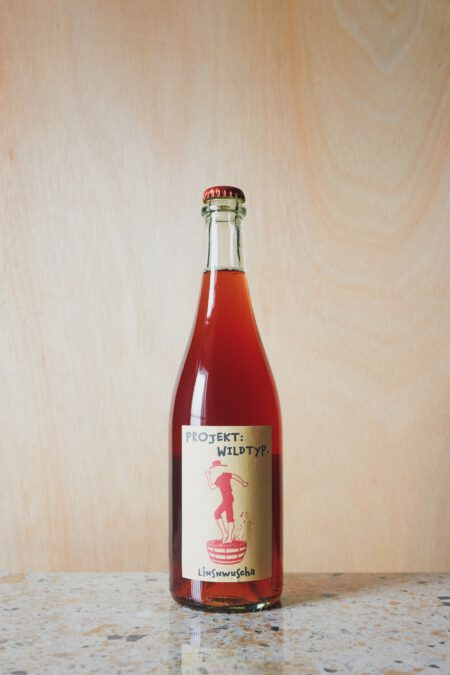 Projekt Wildtyp – Linschwuscha 2022€ 22,00
Projekt Wildtyp – Linschwuscha 2022€ 22,00 -
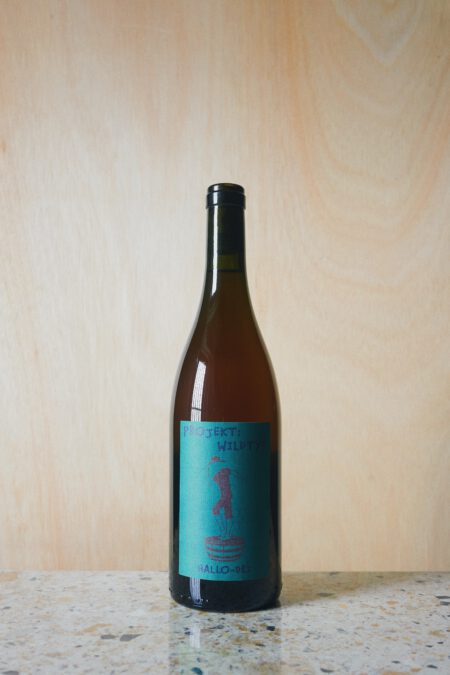 Projekt Wildtyp – Hallo-Dri 2022€ 21,00
Projekt Wildtyp – Hallo-Dri 2022€ 21,00 -
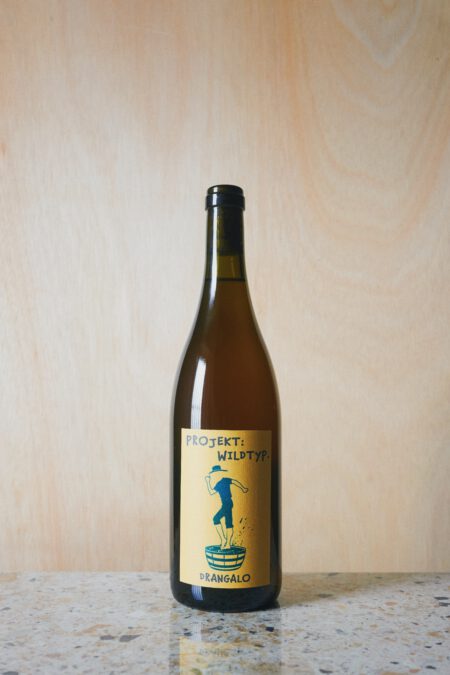 Projekt Wildtyp – Drangalo 2022€ 20,40
Projekt Wildtyp – Drangalo 2022€ 20,40 -
 Projekt Wildtyp – Sprüdla 2023€ 22,00
Projekt Wildtyp – Sprüdla 2023€ 22,00
